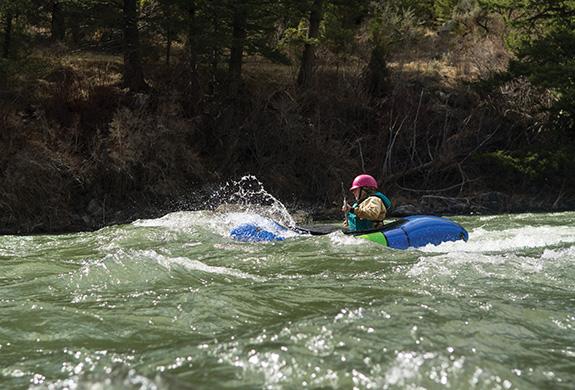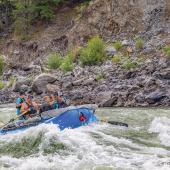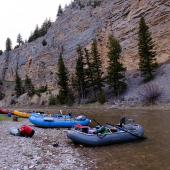Raft Right
The skinny on packrafting.
One of the great joys of outdoor adventure is trying new things—and regardless of how daunting the prospect of a new sport may be, we have to start somewhere. For me that latest somewhere was plunging head-first into packrafting. The sense of freedom was captivating. No longer would I be bound to roadside river accesses and shuttling by vehicle. This innovative exploratory tool would open up worlds of opportunity, from connecting backcountry lakes and waterways to multi-sport endeavors. I wanted every part of it.
But I was an utter greenhorn. I’d been in bigger boats and canoes, but the only kayaks I’d paddled were flat-water sea kayaks. I accepted the challenge nonetheless, bought a boat, and set off on a month-long packrafting expedition. While everything turned out fine, plenty went wrong—and I paid for it, literally and figuratively. With a little more planning, my waters would’ve been much smoother from the get-go. So do yourself a favor and don’t do what I did; instead, research, plan, and ponder before launching in.
There’s a lot to consider before investing in a packraft. Think about what exactly it is you’d like to do with your watercraft. Do you want to run whitewater? Are you planning overnight excursions? Maybe hunt and fish from it? Or all of the above?
For overnight trips, look for a boat with proper storage capacity. Packrafts are small and require careful packing. A handy feature on some boats is an internal storage compartment—there’s a waterproof zipper at the front that allows you to stash gear inside the tubes. This is a great option when you’re carrying lots of bulky gear and clothing.
Another consideration is weight and durability. Packrafts range from calm-water models at just over a pound, to 15-pound beasts that emulate a whitewater kayak. Obviously you’ll have to make some sacrifices. As of now, a lightweight, waterfall-dropping, rock-pinballing packraft doesn’t exist.
Keep in mind that you’ll be packing more than just the raft—think paddle, PFD, and other standard river gear. Consider again the adventure you’re seeking and whether you can afford to go lighter and more delicate, or if you need something beefier. You’ll also want a repair kit—many packrafts have only one chamber, which can up the risk factor when navigating strainers, rocks, and debris. A durable boat and reliable repair kit can prevent a premature conclusion to an otherwise fine day on the water.
If you like to run water higher than Class II, get a spray deck and a skirt. This may seem intuitive, but to a rookie like myself looking to cut weight, I opted for a self-bailing model and spent many days shivering. Unless you’re only using your boat from June through August on the lower Madison, consider a wetsuit or splash jacket, too. Proper layers make the difference on a cold or windy day. Since my initial excursion, I’ve made two upgrades to my boat and invested in a plethora of whitewater clothing, including insulated gloves.
Regardless of what you buy and where you go, a new adventure awaits—just don’t attack it with ignorance. Study up, talk to friends, and let the sky be the limit. Once properly equipped, you shouldn’t have any trouble crafting up novel and inspiring escapades. Happy boating.













